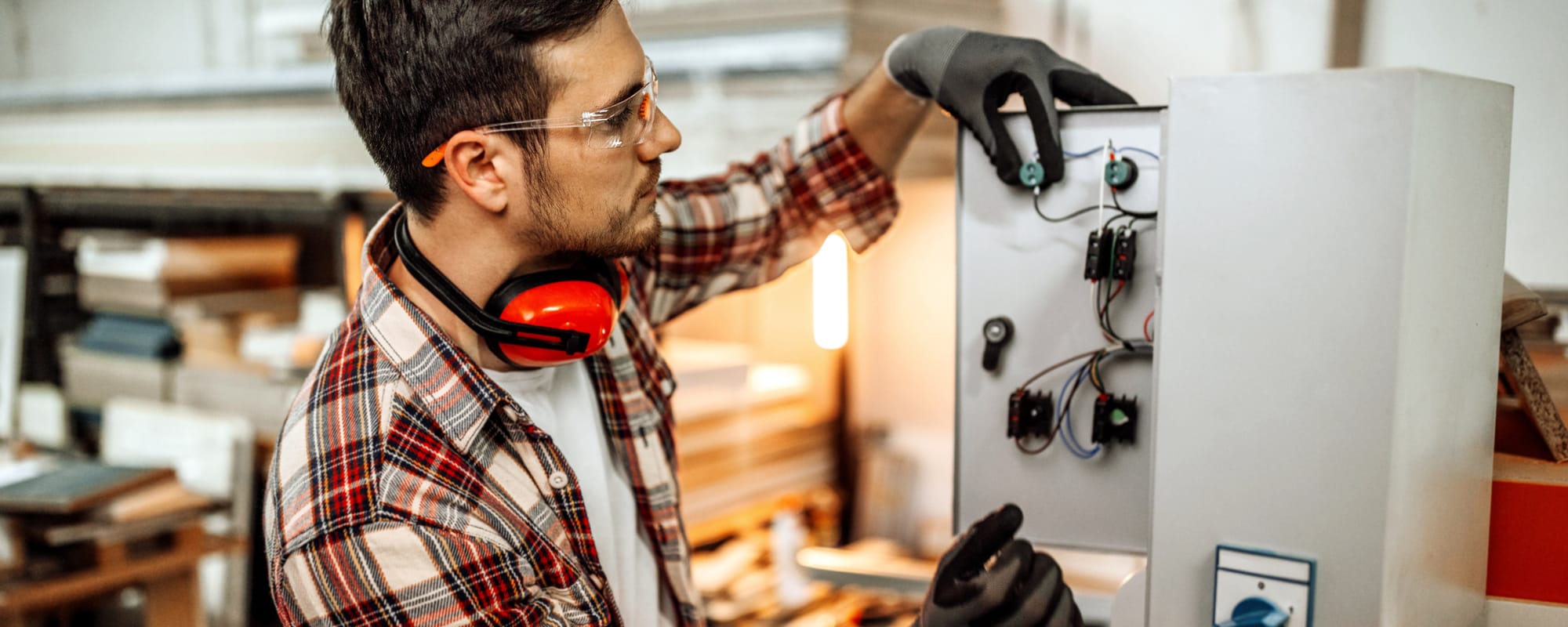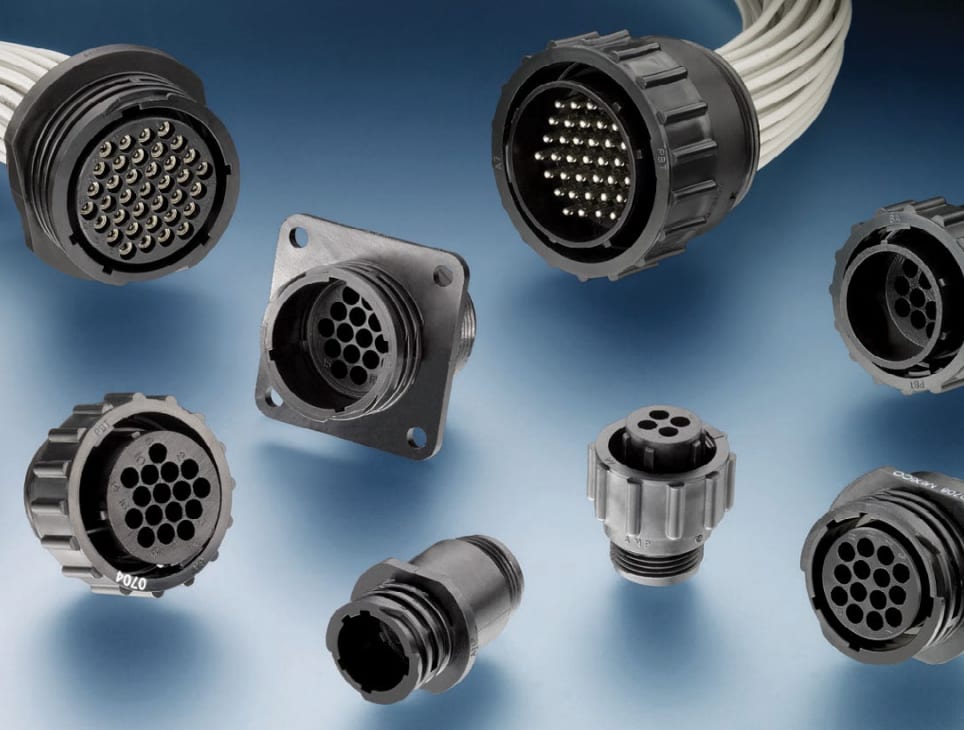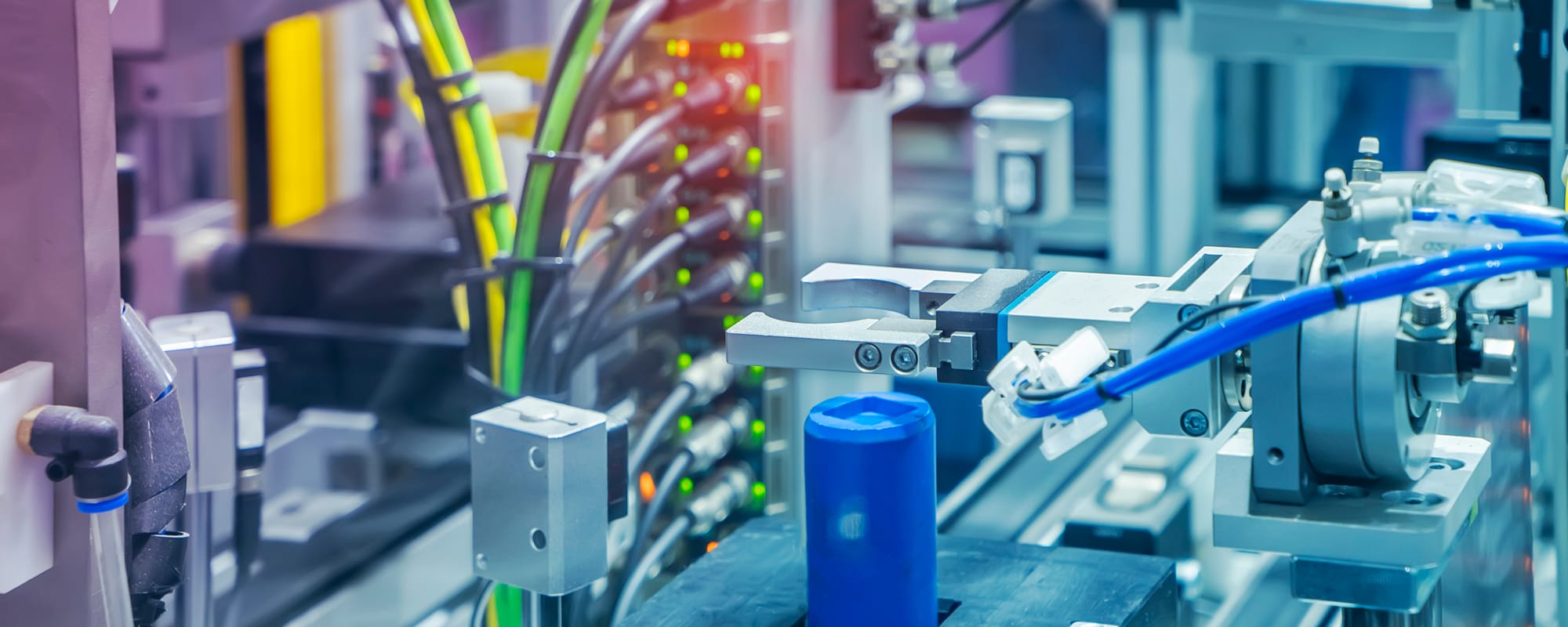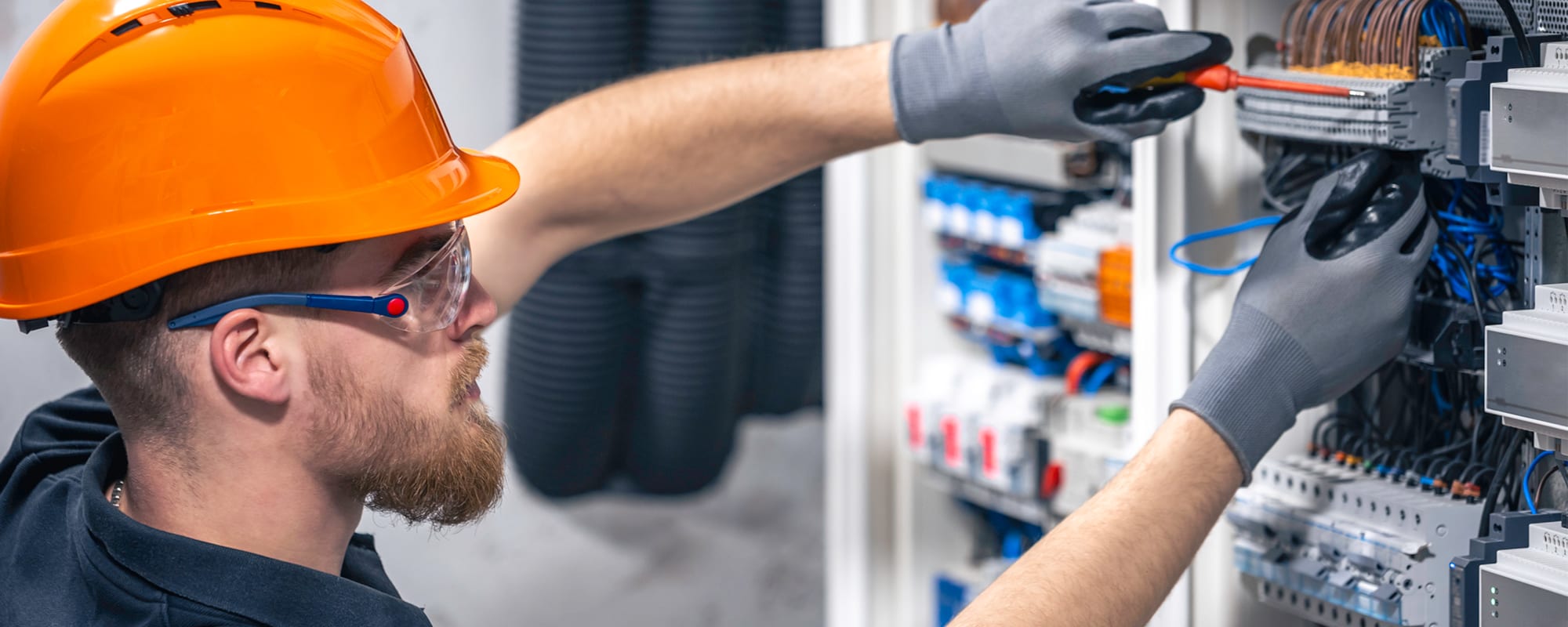Circular plastic connectors provide versatility, ruggedness, and reliability in harsh industrial applications, ranging from robotics and factory floor machinery to HVAC systems and electric vehicle charging stations. We spoke with Tom Wess, Product Manager – Circular Plastic Connectors at TE Connectivity, to learn more.

Circular plastic connectors shine as excellent power and signal solutions in harsh industrial environments, providing versatility, ruggedness, and reliability in demanding applications ranging from robotics and factory floor machinery to HVAC systems and electric vehicle charging stations. We spoke with Tom Wess, Product Manager – Circular Plastic Connectors at TE Connectivity (TE), to learn more. Tom deep dives into the benefits of circular plastic connectors, shares selection considerations to help you pick the right solutions for your harsh industrial applications, and introduces TE’s extensive circular plastic connector (CPC) product portfolio.
Q1. Hi Tom. Please introduce yourself and tell us about your role at TE Connectivity.
My name is Tom Wess. I’m originally from just outside of Baltimore, and I currently live in Harrisburg, Pennsylvania. I went to York College in Pennsylvania and graduated with a degree in communications. I originally wanted to be a sports broadcaster, and my first job out of college was with a minor league baseball team. I eventually worked my way up to their sales and marketing department, then worked at a bank before coming to TE. I didn’t know the industry at all, but TE thought my marketing background, combined with some financial experience, would lend itself to product management. I also wasn’t sure what being a product manager entailed — but I’ve been doing it at TE Connectivity for 18 years, and it’s been quite a ride. I’ve managed several different TE product lines and am currently managing TE’s circular plastic connector (CPC) portfolio, which is now part of our connected living solutions business unit.
Q2. Please also provide us with a brief introduction to TE Connectivity.
TE Connectivity is a global company that generated $15.8 billion in sales in the 2024 fiscal year. Our purpose is to create a safer, more sustainable, more productive, and more connected future, which we do through advancing the future of transportation, innovating for sustainable energy, making factories and homes smarter, and enabling global communication networks to function seamlessly. We also serve a huge breadth of industries and customers, ranging from automotive and industrial automation to aerospace and defense. I think about it this way — few people know who we are, but we’re an integral part of systems used in their everyday lives.
Q3. You joined us today to talk about power and signal connectors, specifically circular plastic connectors. Please tell us more about the role of power and signal connectors.
There’s a large selection of power and signal connectors available on the market, and they serve a wide variety of roles, but their primary role is to transmit electrical power and data signals between electronic devices. Signal connectors transmit data signals, while power connectors transmit power and prevent significant load drops. There are also hybrid versions that provide both power and signal capabilities within the same connector.
Their range of applications is extensive, from robotics, computer numerical control (CNC), and welding machines to agricultural equipment, like large combines, and HVAC systems. They also play a crucial role in electric vehicle charging stations (EVSE) and are well suited for pretty much any application using some sort of control system.
Take, for example, the role of circular plastic power and signal connectors in a forklift. On the backside of the forklift, just above the engine, there’s a small control system that’s used while someone is driving. Circular plastic connectors help ensure that, when pressed, the ignition button powers up the machine (a power application) and gears shift as expected (a signal application).
Q4. Please introduce us to the benefits of circular plastic connectors.
Space savings are the main benefit of circular plastic power and signal connectors — especially if you need both capabilities, which you can accomplish with a single hybrid connector. This benefit is easily seen in the design itself. For example, the circular shape is likely to be more compact than a rectangular solution, and it’s easier to fit more contact pins into a circular pattern than a square pattern.
Another benefit of circular plastic connectors is they tend to be a lot lighter than circular metal connectors. Also, along those lines, plastic is almost always more cost-effective than metal while still providing an excellent solution for most typical power and signal needs.
In my response to your last question, I touched on some specific application examples of circular plastic connectors (CPCs). Generally, they’re extremely reliable in harsh environments, which may expose components and devices to high vibration, moisture (whether humidity, rain, or splashing), and extreme temperature variations. You can be confident in circular plastic connectors from TE, regardless of whether they’re in a box, a warehouse, or an outdoor enclosure.
Q5. What common challenges do customers face in selecting and implementing circular plastic power and signal connectors? Do you have any advice for overcoming these?
One of the most common challenges deals directly with the primary benefit I mentioned above: space savings. Some PCBs have limited real estate to work with. Another common challenge is harsh environments. When selecting circular plastic connectors for harsh environment applications, you must ensure they can not only handle conditions you’re currently facing — but ones you might face in the future as well.
Customers should also consider physical and electrical characteristics that can affect implementation, performance, and maintenance, including ease of installation, current and voltage rating requirements, contact size, pin counts, wire gauges, and environmental sealing.
These are the types of questions that help you determine the right circular plastic connector for your application. Teams at TE and RS help customers answer these types of questions every day.
Q6. Please introduce us to TE Connectivity’s Circular Plastic Connectors Series.
Our CPC product line comes in six different series, plus a version we’ll call our Mini CPC. These variations and wide breadth allow our customers to choose the right product for addressing their specific design requirements.
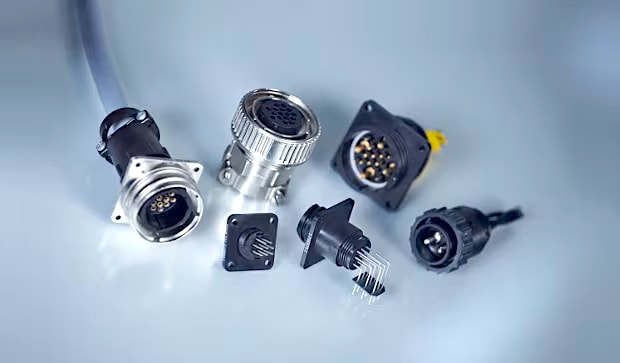
First up are TE’s Series 1 CPCs — which we call “standard density.” It’s a standard-size connector equipped with up to 12 contacts, each rated up to 13 amps (13A). The sealed version of Series 1 is rated IP65/67, and the unsealed version is rated IP54.
Our Series 2 CPCs are high-density signal connectors, which means they have a greater number of smaller contacts — as many as 37 contacts, rated to transmit signals up to 7.5 amps (7.5A) per contact.
Series 3 CPCs are high-density power connectors available with 3–7 contacts, rated to transmit up to 25 amps (25A) of power per contact.
The Series 4 CPCs are hybrid connectors with 13–22 contacts, each rated for up to 25 amps (25A) power or signal.
TE’s Series 5 CPCs are power connectors rated for up to 45 amps (45A) and available in a sealed version rated IP65/67 and an unsealed version rated IP20.
Our Series 6 CPCs are also hybrid connectors and allow users to select a combination of signal contacts rated for up to 13 amps (13A) and power contacts rated up to 45 amps (45A).
The CPC line also includes the Mini CPC — a much smaller, signal-only connector available with up to four contacts rated up to 2 amps (2A) each.

With all these options, TE has an excellent solution for whatever you need. The connectors in our robust CPC product portfolio feature as few as two contacts and as many as 63 — and are available in both wire-to-board solutions and board-to-board configurations. They also offer a wire gauge range spanning 8–30 and are rated for operating temperature rating extending from -55°C to +105°C. Another strong attribute of our CPC product portfolio is the contact system within the housings. We use a stamped and form contact across our CPC product line and many other TE connector lines. This contact technology helps us scale, which contributes to minimized cost and tooling requirements, improving installation processes. To terminate CPCs, customers can use a hand crimper or a semi-automated machine.
TE Connectivity was the first company to bring circular plastic connectors to market. Because we produce CPCs here, in North America, we can get orders out quickly. Our CPC products also provide excellent quality, versatility, reliability, and durability.
Q7. TE Connectivity’s Circular Plastic Connector Series also includes tools and hardware. Please tell us about those products.
TE has an extensive tooling division. Specific to CPCs, we have hand-crimp tools for low-volume production and handheld, battery-operated, semi-automated machines for medium-volume production. For high-volume needs, like running thousands of terminations or building thousands of cable assemblies, we have fully automated machines. We also offer housings, contacts, cable clamps, and hand tools to complement our CPC line.
The great thing about our termination tools is that — just like our CPCs — they’ve been on the market for decades. And they haven’t changed. A tool you bought 30 years ago will still fit and be valid now.
Q8. Are there any success stories you’d like to share about TE Connectivity’s Circular Plastic Connector Series?
The application was heavy-duty mining equipment. The customer, who’d been with us for a long time, had huge dump trucks two stories tall. They were working on a new design, but they decided to open the circulars business to a few other suppliers. After two months of comparing the alternatives, the customer told us they were sticking with TE for our expertise, our knowledge, and our response time. The engineers on this product line have been here longer than I have, so they know what they’re doing and how to deliver an excellent solution.
Some newer engineers were involved in this project, and they weren’t as familiar with our products — but they recognized quickly TE was the right choice. We want to make things as easy as possible for customers. You have questions — we have the expertise to provide answers. And if we don’t have the answer, we’ll find it. What sets us apart, in my opinion, is our knowledge, our breadth of products, and our team of people passionate about helping customers.
Q9. Is there anything else you’d like our listeners to know about TE Connectivity or its Circular Plastic Connector Series?
I’ll just reiterate what I said before. The breadth and quality of product options, combined with our helpful people, set us apart. We’ll always respond. We have a mandate to respond to every inquiry within 24 to 48 hours, no matter where you’re located around the globe. The CPC product line has been on the market for over 50 years, and it continues to grow.
Trust your harsh-environment power and signal connections to TE Connectivity and RS
TE Connectivity is a global leader in the design and manufacturing of electrical and electronic components for a wide array of industries and applications. RS offers an extensive selection of TE Connectivity products, including the Circular Plastic Connector Series connectors and tooling, as well as relays, circuits protection solutions, switches, wire and cable, and more.
To learn more about TE Connectivity, visit the links embedded here and check out their other contributions to the RS Expert Advice Series. For support with identifying, procuring, deploying, and maintaining TE Connectivity’s Circular Plastic Connector Series power and signal connectors, please contact your local RS representative at 1.866.433.5722 or reach out to the RS technical support team.
